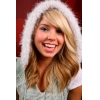|
 Knitted fur is known
and practiced since '70s when a Canadian designer Paula Lishman introduced the exclusive fur knitting
techniques unknown to others. Yet, in the early years of the third millennium the
fur fabric seized the hearts of population and became one of the favorite
materials for the most reputed fashion houses of the world, offering the
luxurious sense of fur for wearing from inside and outside. Knitted fur is known
and practiced since '70s when a Canadian designer Paula Lishman introduced the exclusive fur knitting
techniques unknown to others. Yet, in the early years of the third millennium the
fur fabric seized the hearts of population and became one of the favorite
materials for the most reputed fashion houses of the world, offering the
luxurious sense of fur for wearing from inside and outside.
The history of fur knitting
approaches
In 1968 Paco
Rabanne introduced his collection of clothes made of knitted fur thread. Though Paula
Lishman was the first to patent the technology in 1979 and until 1998 she stayed
the only patent holder in this segment. The secret of fur making techniques was
familiar to the limited number of specialists from Canada.
Paula first created
her clothes from rabbit skin having the cut in thin strips and twisting them in
the way that fur was seen and felt both from inside and outside, and it was
used without any lining of silk or other fabric. Within the next 20 years Paula
launched a plenty of coats, fur-caps, jackets, vests and shawls made of fur in
this approach.
Much later these fur
making techniques were used by other designers and manufacturers including the Fendi
House, Nijole, Robert Baulieu House from Italy,
and Dior House in France.
Bluegirl 2010 Fall Collection by Blumarine mainly presented knit fur garments
with loops pulled out. This technology was used in cardigans, scarves, oversleeves,
bags and fittings.
The legendary
fashion houses in Italy
like Anpel, Cavaggioni, Delba, Fontani, Jun, Mala Mati and Vinicio Pajaro introduced
knit fur along with other fur goods. And basically the garments were made as classic
fur coats of natural colors.
Today Russian
fashion house by Lidia Soselia and the famous designer Lyudmila Dobrokhotova from
Moscow combine
several fur knitting techniques while creating fashionable and luxurious
clothing items. Thus, the collection by Lyudmila Dobrokhotova from 2000 «Under
one's breath» was a real success for the designing idea. The collection
presented clothes, knitted without a single seam; the designer used mink, astrakhan
and fox fur threads adding formed yarn and mohair for beter performance. Lyudmila
Dobrokhotova won the contract with the network of stores Bosco di Ciliegi
award.
What is knitted fur?
A thick fur thread
acquired when the leather of rabbit, fox, raccoon, blue fox, beaver or mink of 0,5 cm thick, is knitted over
the solid cotton basis. The best (and the biggest) fur leather cloths are cut along
the spiral. The cotton basis prolongs the life time of the garment. The fur
appears to be from both sides giving the unique pleasure of touching the fur. Sheared
fur is considered to be the best and smaller pieces and remains are used for
accessory production. The unique technology makes it possible to manufacture
very thin and delicate articles of clothing: а mink jacket, for example, weighs only about 700 gr.
But the process itself is rather labor-intensive: four workers need nearly 200
hours to make an article.
Fashion designers
and artists are able to create a variety of goods including fur coats, jackets,
sweaters, pullovers, and scarves, bags, wedding pelerines, fur tippets and what
not. They can use various kinds of platting, making diverse patterns and
designs. All clothing items are warm, practical and luxurious. All that makes
knitted fur extremely popular among both consumers and producers of different
countries.
Care for knitted fur
goods
When knitted fur goods
are creased it’s recommended that the garment is heat-treated with steam or hot
air with the hand drier over a distance of 5-10 cm. The fur will be restored
and is smoothed out.
Various stains can
be removed only at the dry-cleaner. Wet clothes from fur should be dried in room
temperature, never putting onto the radiator or a heater. When the item is
dried it should be treated with warm steam to raise the nap.
Fur knit clothes
must be kept in the dark and dry place, in special soft covers to protect from
moles. If the fur clothes is not used for a long period of time it should be aired
two to three times a year.
When the frost is
too hard a knit fur coat can hardly warm you, but it can be a perfect accessory
for any festive event or a function.
|